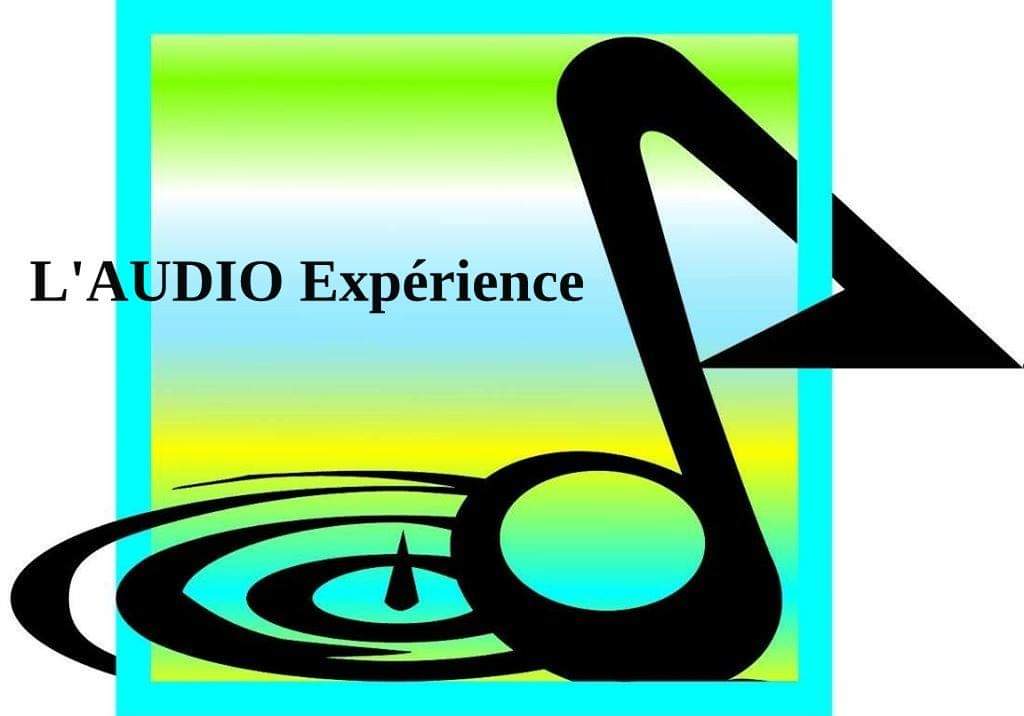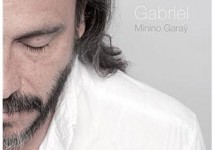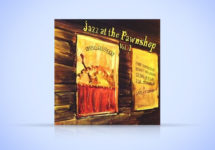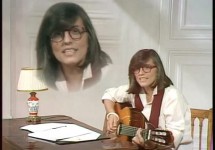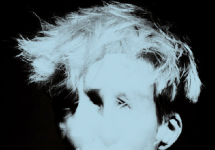La Compilation Persuasive Percussion : un must pour les collectionneurs des années 1960.
A la fois violoniste, chef d’orchestre et ingénieur du son, Enoch Light est devenu populaire grâce à ses albums Persuasive Percussion, qui furent parmi les premiers à exploiter les capacités d’enregistrement stéréo, dans les années 50. Quelques-uns des meilleurs micros de l’époque ont été utilisés : RCA-44BX, Telefunken U-47, Telefinken KM 56, Telefunken 201, Western Electric 1142A, Altec 639B …
Utilisés pour tester les équipements audio, en raison de la séparation du canal gauche et du canal droit, ses albums sont devenus des références pour les collectionneurs de vinyles.
L’album «Stéréo 35mm Volume 2» est entré au Top Ten Album du Bilboard en 1962.
Découvrir l’univers de ENOCH LIGHT sur« Great Music – Great Art » : http://gonzai.com/enoch-light-command-records/
Je vous recommande particulièrement les albums vinyles mais vous pouvez aussi vous les procurer en CD ou SACD.
Commander l’album en vinyle, sur Amazon : https://www.amazon.fr/Persuasive-Percussions-Enoch-Light/dp/B00BBP6XZO/ref=sr_1_2?s=music&ie=UTF8&qid=1487262305&sr=1-2&keywords=persuasive+percussion
Commander l’album en vinyle (180g) sur Top Music International Limited : http://www.topmusic.com/tmlp9013.3.htm
L’avis de Marc Philip sur cet éditeur : http://www.magazine-audio.com/top-music-international-limited-disques-audiophiles/
Vidéo sur DailyMotion :
http://www.dailymotion.com/video/x1aak76_enoch-light-and-his-orchestra-zing-went-the-strings-of-my-heart_music?GK_FACEBOOK_OG_HTML5=1
Vidéos sur YouTube : https://www.youtube.com/watch?v=pPRKVgSSX1Y&list=PL4A483E3F65B4D70C
De la lecture (en anglais) : Enoch Light (1905-1978) was an American classical violinist, bandleader and recording engineer. He innovated in many ways. He sometimes bounced sound between the left and right channels, called ping-ponging. He arranged his musicians so as to produce the best sound. His first album, Persuasive Percussion, was a huge hit, relying solely on retail sales, as his stereo music got almost no airplay on monaural AM radio stations. The abstract, minimalist artwork on the covers stood out from covers of other albums. Enoch Light was so concerned about the sound of his music that he wrote extensive liner notes, creating a book-style folding album that came to be known as the gatefold packaging format.
A propos de Enoch Light : http://www.mtv.com/artists/enoch-light/
Enoch Light was a popular bandleader of the ’40s and ’50s who is best known for his Persuasive Percussion and Provocative Percussion albums of the mid-’50s, which were some of the first albums to exploit the capabilities of stereo recording and the use of using 35mm film as a recording method instead of tape.
During the ’30s, he headed the Enoch Light and the Light Brigade big band. The Light Brigade primarily played in theaters and on the radio, although they also toured Europe. The band also managed a hit in 1937 with “Summer Night,” which was sung by Johnny Muldowney.
After the Light Brigade disbanded, Light became a session musician, playing on various records and radio broadcasts, including Hit Parade. During the ’40s, he recorded versions of popular hits for budget labels, for sale in discount stores.
Light’s career bounced back in the late ’60s, when the Charleston City All-Stars, under his direction, had a series of hit albums entitled Roaring 20’s. After their success, he founded the Command record label, which gave him an outlet for his sonically adventurous records. Light happened to begin the label around the time stereo became widely available, and he exploited the new technology to its fullest, creating albums that used the full sonic spectrum of stereo.
The first of these albums were Persuasive Percussion and Provocative Percussion, and they were wildly popular, charting in the American Top Ten. One of the most notable features of these albums were their “ping-pong stereo,” which featured the music jumping from the left speaker to the right, and vice versa. During this time, Light and Command also pioneered the use of using 35mm film as a recording method instead of tape.
Light remained the managing director of Command until 1965. While he was the head of the label, he recorded classical albums, big-band records, and collections of film themes. After 1965, Command was bought out by ABC Records, who in turn was quickly bought out by MCA Records. MCA made Command into a budget label, pressing the albums on poor vinyl and putting them into discount stores. By 1970, the label was no longer profitable and MCA shut it down. Light continued working, both as an arranger/conductor and the head of Project 3 Records. His activity slowed in the ’70s, though he did continue to record. Light died on July 31, 1978. ~ Stephen Thomas Erlewine, Rovi
Command Album Discography
By David Edwards, Patrice Eyries, and Mike Callahan
Last update: September 2, 2005
“The Command (originally Command Performance) label was started by Enoch Light and George Schwager in 1959 in Harrison New Jersey. It was a subsidiary to the Grand Award label. The label recorded popular, classical and jazz music and was acquired by Am-Par Records in October 1959 when Am-Par purchased all of the labels of Enoch Light. Command continued to operate under the Am-Par Corp. and Enoch Light was Executive Vice President and Managing Director of the Command and Grand Award Labels.
Command was operated as a audiophile record label producing records with exaggerated separation of the stereo tracks. The albums were packaged in high quality gatefold covers with distinctive abstract designs. The Persuasive Percussion series of records were very successful, the first “Persuasive Percussion” album received little airplay on AM stations but Joel Whitburn lists this album as one of the 25 best selling albums of the modern era. Command was one of the first companies to adopt 35MM film for master recording instead of magnetic tape for the better fidelity it afforded.
In addition to running the label, Enoch Light was one of the most prolific artists recorded on the label with records issued under Enoch Light Orchestra, Enoch Light and the Light Brigade and Enoch Light and the Charleston City All Stars. Accordion player Charles Magnante and guitar player Tony Mottola also released many albums on the label. Piano player Dick Hyman issued albums under his own name and the pseudonym Knuckles O’Toole. Despite the meticulous recording techniques, almost everything released on the label could be described as MOR or lounge music, with only a few singles chart breakthroughs. Today this type of music has enjoyed a resurgence in popularity and is sometimes called “Bachelor Pad Music”.
Enoch Light left the Command label in 1966 to form the Project 3 Label. Project 3 was not connected with ABC. After Light left, the quality of the albums on Command deteriorated until they discontinued releases in the main series in 1970. ABC used the “Command Quadraphonic” name from 1971 to 1976 for quadraphonic releases for albums that were originally on Command, ABC, and Dunhill, and reissued a series of two-record sets under the name “Command Two-Fers” in 1973-74. The first appearance of “subsidiary of ABC Records” appeared on #871, but was sporadic after that.
The first Command label was gray with black print. The Command logo is in script in white above the center hole. At the bottom of the label is “MFG. BY GRAND AWARD RECORD CO, INC., U.S.A” This label was used from the start in 1959 till 1961.
The second Command label was off-white with black print. The Command logo is in script in gold above the center hole. At the bottom of the label is “MFG. BY GRAND AWARD RECORD CO, INC., U.S.A” This label was used from 1961 till the mid-60’s. Later issues had “A Subsidiary of ABC Records” at the bottom, this label was used from the mid 1960’s to 1969.
The third label was creme color with black print. The script “Command” logo in black above the center hole in a multi-color box, beside the logo is the ABC Records logo. At the bottom of the label is “Grand Award Record Co. Inc. Is a subsidiary and trademark licensee of ABC Records, Inc. New York, N.Y. 10019 Made in USA” This label was used from 1969 to approximately 1972. From 1972 till the end of the label, the multi-color box was changed to black and the Grand Award Record Co. was removed.
The 40000 series had an olive color label with black print, with green and white logos around the perimeter.
We would appreciate any additions or corrections to this discography. Just send them to us via e-mail. Both Sides Now Publications is an information web page. We are not a catalog, nor can we provide the records listed below. We have no association with Command Records. Should you be interested in acquiring albums listed in this discography (all of which are out of print), we suggest you see our Frequently Asked Questions page and follow the instructions found there. This story and discography are copyright 2002 by Mike Callahan.”
Articles similaires
Articles similaires
Album Gabriel de Minino Garaÿ. La révélation.
« JAZZ VAMOS » avec MININO GARAY, à la Salle de L’Uper-Cut à Marseille, le 25.05.2016 à 21h. «Vamos» est au
Jazz at The Pawnshop : l’enregistrement culte d’un club de jazz.
Pourquoi toute cette agitation autour de cet enregistrement ? Parce que les prises de son sont tout simplement exceptionnelles. Remarquable à tous
Rencontre avec Ibrahim Maalouf.
Concert d’Ibrahim Maalouf, ” Red & Black Light ” et ” Kalthoum ” le 25 juillet 2016, à Marseille, au Palais
Je vous écris sur … L’audioexpérience.
« Je t’écris, tu m’écris sur papier d’Arménie … Un coup de blues dans mes nuits de chocolat brun …
Festival de jazz à Montreux.
Pour celles et ceux qui ne se connectent pas à ma Page Facebook, revivez le temps d’un morceau, un des
Jeanne ADDED : l’imprévisible ascension.
Lauréate du prix Deezer Adami 2015 et nommée aux Victoires de la Musique dans la catégorie Album Révélation en 2016,
Aucun commentaire
Ecrire un commentaire
Seul enregistré utilisateurs peuvent commenter.
